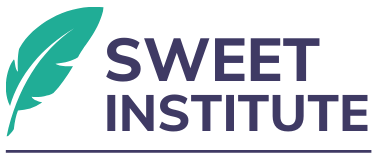Solution-Focused Brief Therapy: Empowering Individuals to Harness Their Own Resources and Strengths

Solution-Focused Brief Therapy: Empowering Individuals to Harness Their Own Resources and Strengths
One of the most powerful beliefs at the core of Solution-Focused Brief Therapy (SFT) is that individuals inherently possess the necessary resources and strengths to solve their own problems.[1] This belief stands in stark contrast to traditional therapeutic models that often focus on analyzing or dissecting the problem, exploring its origins, and addressing past trauma or failures. In SFT, the focus is on identifying outcomes, drawing from existing strengths, and amplifying those resources to foster lasting change.[2]
But what does it truly mean to believe that individuals have the internal resources to resolve their challenges, and how does this belief play out in therapy? Let’s explore the central role this principle plays in SFT and how it empowers individuals to take control of their healing journey.
The Foundation: Strengths, Resources, and Resilience
At the heart of Solution-Focused Brief Therapy is the belief that individuals are not defined by their problems, but by their strengths, capacities, and potential.[3] Every person, no matter their circumstances, has unique skills, abilities, and experiences that can be leveraged to overcome current struggles. These strengths might include:
- Past successes that prove resilience and adaptability.
- Support systems such as family, friends, or community resources.
- Personal qualities like determination, creativity, empathy, or resourcefulness.
- Previous coping mechanisms that have helped the individual navigate difficult situations.
Rather than diving deep into the pathology of a person’s struggles, SFT is premised on the idea that change happens when we focus on what already works, not what’s broken.
Empowerment Over Pathology
In traditional therapeutic models, a common approach is to delve into a person’s history to uncover the roots of their issues. This process can sometimes leave individuals feeling defined or trapped by their past. In contrast, SFT creates a shift toward empowerment. It suggests that individuals are not powerless in the face of their challenges but can leverage their existing strengths to move toward solutions.[4]
By operating from a place of empowerment, SFT validates the client’s autonomy and their capacity to navigate change. It reinforces that the client is the expert on their own life, and the therapist’s role is to help uncover and amplify the strengths and resources that the individual already possesses.
The Role of the Therapist: Facilitating, Not Fixing
In Solution-Focused Brief Therapy, the therapist’s role is to act as a facilitator of change, rather than a “fixer.” SFT operates from the belief that the therapist does not have the answers; the client does. The therapist’s task is to help clients recognize what works, explore how they have coped in the past, and identify small, actionable steps that will lead to change.[5]
Key Techniques in SFT That Leverage Strengths and Resources:
- Exception-Seeking Questions: These questions help individuals identify times when their problem wasn’t as severe or didn’t exist. By exploring these exceptions, therapists guide clients toward recognizing what was different about those moments, uncovering strengths and strategies that could be applied again.
- Example: “Can you recall a time when things were not as intense? What was different about that situation?”
- Scaling Questions: This tool helps clients assess their progress and feel empowered about their journey. It emphasizes incremental improvements and shifts the focus away from overwhelming goals.
- Example: “On a scale from 1 to 10, where would you say you are right now in dealing with this issue? What would it take to move just one step up the scale?”
- Solution-Focused Dialogue: The therapist engages the client in conversations that center on their strengths, solutions, and hopes for the future, instead of focusing on the problems at hand. This shifts the client’s mindset from one of helplessness to one of self-efficacy.
Fostering a Future-Oriented Mindset
One of the hallmark features of Solution-Focused Brief Therapy is its future-oriented approach.[6] Instead of digging into past trauma or problem-solving based on what has gone wrong, SFT shifts focus toward a positive, solution-driven future. This future-focus encourages individuals to think about what they want, how they want things to be different, and what strengths they already have to make that happen.
The Miracle Question, a classic SFT tool, embodies this future-focused approach. It asks the client to imagine a world where their goals have already been achieved, stimulating their mind to create a vision of success and highlight the resources and strengths they already have to get there.
Example: “Imagine that overnight, a miracle happens, and you have already achieved your goals. What’s the first sign that tells you things are different? What would you be doing differently?”
This question doesn’t just provoke a shift in perspective; it encourages the client to believe that change is possible and within their grasp—in fact, it may already be happening without them even realizing it.
Sustaining Change Through Self-Awareness and Action
When individuals recognize that they have the power to change, they’re more likely to sustain their progress. Solution-Focused Brief Therapy not only helps individuals identify their strengths but also equips them with tools to take action toward a better future. The therapy provides momentum, reinforcing the idea that small actions lead to big changes.
As clients begin to take action, they learn how to continue using their self-awareness and resourcefulness long after therapy ends. They leave therapy not with a sense of dependency on the therapist, but with an increased sense of self-efficacy—the belief that they can tackle future challenges by drawing from their own internal resources.[7]
Conclusion: Empowerment as the Key to Change
Solution-Focused Brief Therapy’s core belief that individuals possess the necessary resources and strengths to solve their own problems is revolutionary. It shifts the therapeutic focus from problem exploration to solution creation, ensuring that individuals leave therapy with a deep sense of empowerment and confidence in their abilities.
By focusing on what works, leveraging existing strengths, and envisioning a positive future, SFT fosters lasting, self-sustaining change. It creates a partnership between the therapist and the client where the therapist is a guide, but the real change happens within the individual—driven by their own strengths, resilience, and resources.
In the world of therapy, empowerment is everything. SFT’s belief in the client’s ability to generate solutions doesn’t just bring short-term results—it ensures that the individual walks away with the tools and mindset to face life’s challenges with confidence, autonomy, and a sense of lasting change.
Would you like to integrate these powerful tools into your practice? Join us for the Solution-Focused Brief Therapy Virtual Conference on April 11, 2024, from 9 am to 1 pm (ET), where we’ll explore Solution-Focused Brief Therapy and its transformative tools. Register HERE.
[1] Quick, Ellen K. Doing what works in brief therapy: A strategic solution focused approach. Academic Press, 2008.
[2] Cepeda, Lisa M., and Donna S. Davenport. “Person-centered therapy and solution-focused brief therapy: An integration of present and future awareness.” Psychotherapy: Theory, Research, Practice, Training 43.1 (2006): 1.
[3] Bolton, Kristin W., et al. “The role of resilience and resilience theory in solution-focused practice.” Journal of Systemic Therapies 36.3 (2017): 1-15.
[4] Connie, Elliott E., and Adam S. Froerer. The Solution Focused Brief Therapy Diamond: A New Approach to SFBT That Will Empower Both Practitioner and Client to Achieve the Best Outcomes. Hay House, Inc, 2023.
[5] Choi, Jung Jin. “The role of the solution-focused brief therapist in client-led problem talks.” The American Journal of Family Therapy 49.4 (2021): 356-372.
[6] Zatloukal, Leoš. “Varieties of Work with Preferred Futures in Solution-Focused Brief Therapy.” Contemporary Family Therapy (2024): 1-15.
[7] Kim, Johnny S., and Cynthia Franklin. “Understanding emotional change in solution-focused brief therapy: Facilitating positive emotions.” Best Practices in Mental Health 11.1 (2015): 25-41.








